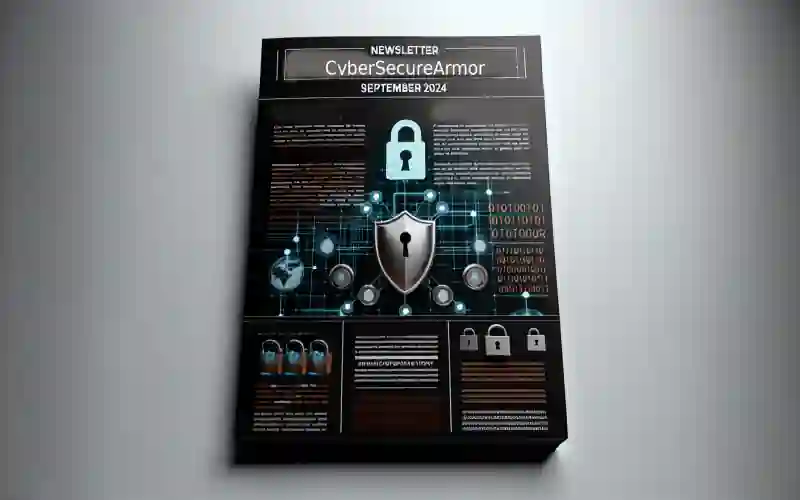
“September 2024: Fortifying Futures – Mastering Cybersecurity Trends and Innovations”
2024 September CyberSecureArmor Newsletter: Summary of All Posts
In the September 2024 edition of the CyberSecureArmor Newsletter, we’ve observed a troubling escalation in cybersecurity threats that underscores a critical need for heightened vigilance and robust security protocols. This month, our series of posts delved into various dimensions of these emerging threats, each revealing a facet of the complex cybersecurity landscape that demands our immediate attention.
We began the month with an analysis of the surge in ransomware attacks targeting healthcare institutions. The frequency and sophistication of these attacks are alarming, with perpetrators exploiting the sensitive nature of medical data to exert pressure and extract hefty ransoms. This trend not only jeopardizes patient privacy but also threatens critical care processes, making it imperative for healthcare providers to fortify their defenses and establish comprehensive incident response strategies.
Transitioning from healthcare, our focus shifted to the vulnerabilities discovered in widely used IoT devices. Our investigations highlighted how default security settings and lack of regular software updates are leaving millions of devices open to attacks. The interconnected nature of these devices can potentially turn a single compromised device into a gateway for widespread network disruptions. This situation is particularly concerning given the rapid expansion of smart home and industrial IoT applications, signaling an urgent need for manufacturers to prioritize security in their product design and for users to be more diligent about their digital footprints.
Mid-month, we explored the disturbing rise in phishing scams that cleverly mimic official communications from financial institutions. These scams have become more sophisticated, with attackers using advanced techniques to bypass traditional email filters. As financial transactions continue to migrate online, the potential for significant financial loss and erosion of trust in digital platforms grows. It’s crucial for both individuals and organizations to enhance their awareness and implement stronger verification processes to combat these deceptive tactics.
Furthermore, our coverage extended to the international arena where state-sponsored cyber activities have shown no signs of abating. Several reports this month detailed aggressive cyber espionage campaigns aimed at stealing intellectual property and influencing political outcomes. These revelations are particularly disconcerting as they hint at a broader strategy by certain states to undermine global stability and gain strategic advantages. The international community must respond with a unified strategy that includes diplomatic, legal, and cybersecurity measures to deter such behavior and protect global interests.
Lastly, we addressed the critical issue of data breaches within educational sectors. Schools and universities are becoming prime targets due to the vast amounts of personal data they hold. The consequences of these breaches are profound, affecting students, faculty, and staff, and potentially leading to identity theft and other forms of fraud. Educational institutions must therefore urgently adopt stricter data protection measures and foster a culture of cybersecurity awareness across campuses.
As we conclude this month’s newsletter, it’s evident that the cybersecurity landscape is evolving rapidly, with adversaries becoming more cunning and our digital ecosystems more interconnected than ever before. The array of issues discussed this month paints a worrying picture but also serves as a call to action. It is imperative for all stakeholders—individuals, corporations, and governments—to intensify their efforts in securing digital assets and safeguarding private information against these burgeoning threats. The path forward requires not only technological solutions but also a fundamental shift towards a more proactive and preventive cybersecurity posture.














